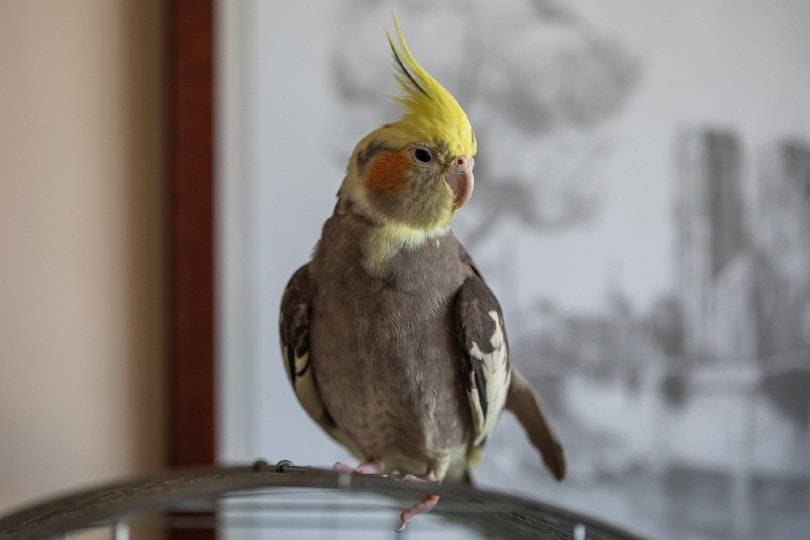Can You Potty Train a Parrot? 6 Vet-Reviewed Tips & Advice
By Brooke Bundy
Updated on
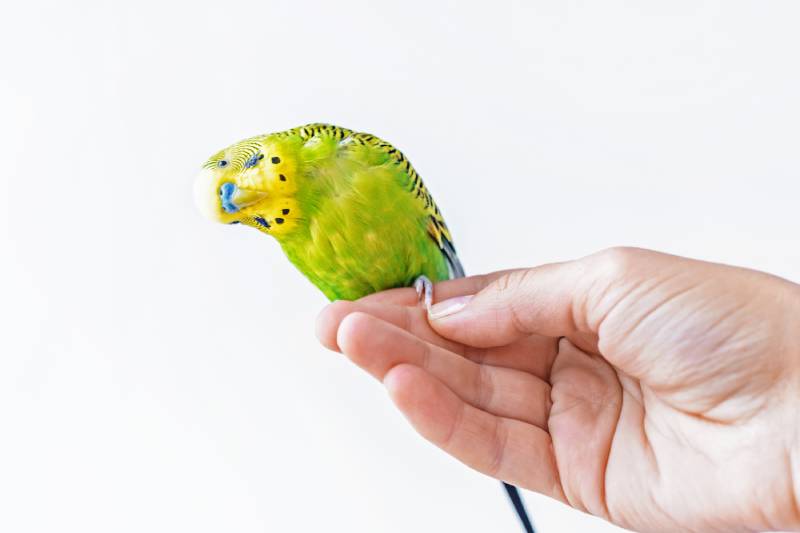
Many pet owners prefer to offer their parrot time outside of their enclosure every day for their physical and mental health. Plus, it helps you build a tighter bond with your feathered friend. However, a free bird flying around your house with the liberty to go potty anywhere spells disaster for furniture, mirrors, and unsuspecting people down below. Thankfully, it is challenging, but possible to potty train a parrot. If your parrot is receptive to training and is well socialized, they might be potty trained using these tips below.
The 6 Tips on How to Potty Train a Parrot
1. Learn the Cues
Familiarize yourself with your bird’s bathroom habits. When parrots are about to poop, they feel slightly heavier (if they’re perching on your finger before they poop), tend to fluff up, lift their tail slightly, and then pass their droppings. Knowing when your parrot is about to poop can prepare you to know when you want to offer them training.
For most parrots that are used to being removed from their cage every morning, they often poop as soon as they are placed on their designated stand, perch, or spot outside the cage in the morning. This is because they often have an instinct to “hold” their waste while in their nest or cage and only pass it once they’re “away” from it.
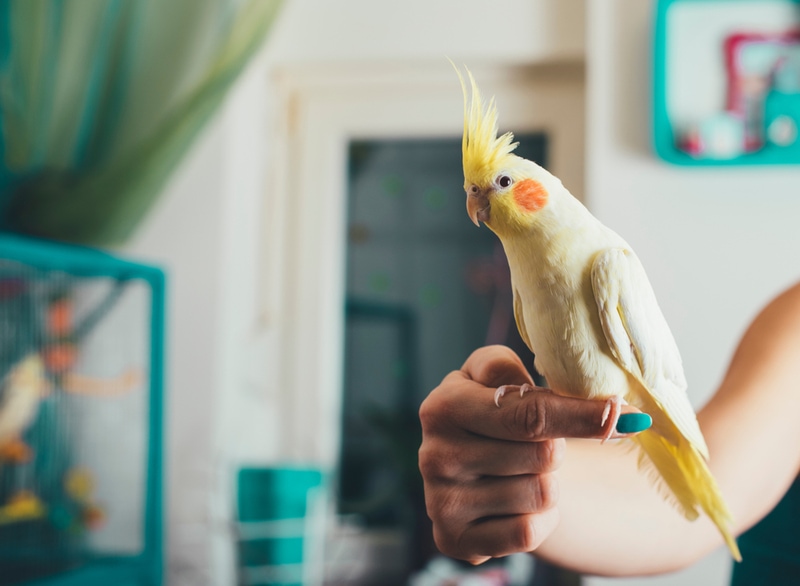
2. Designate Safe Places to Poop
Decide where you want your bird to go. For example, you can set up a potty area inside their cage or teach them to go on a piece of newspaper, on their stand, or a specific perch.
3. Move Them to Their Potty Area When You Notice It’s Time for Them to Go
If you notice your parrot about to pass droppings, take them to their designated pooping area, and encourage them to “go” with a phrase or keyword. Try using a pleasant, encouraging voice cue while you do so. Parrots usually aren’t shy and will readily pass droppings in your presence.
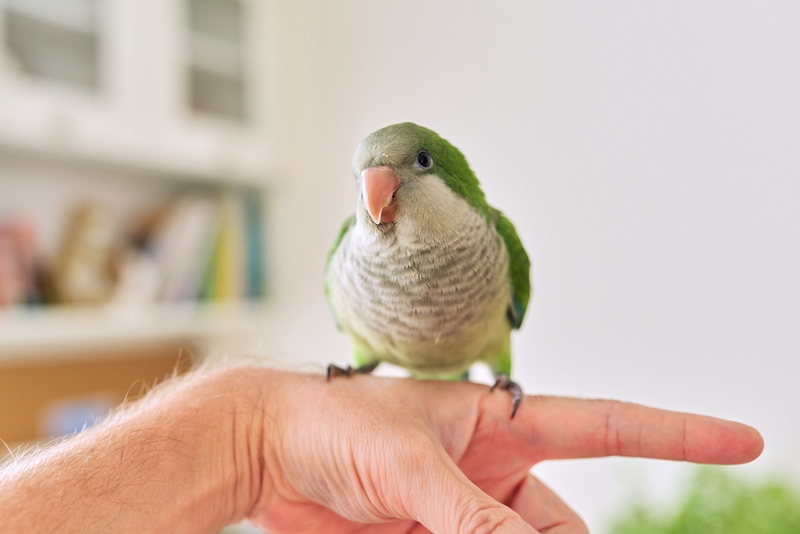
4. Decide Whether You Want to Use a Command Word
As mentioned above, some parrot parents teach their bird a command word for potty. If you choose this option, make sure you consistently use the word while they’re going so that they’ll remember it later. You’ll also need to relay the message to anyone who may be watching your parrot so that your bird will be able to relieve itself while you’re away.
5. Reward Them with Praise and Treats
Once they’ve gone where they’re supposed to, remember to reward them with plenty of praise and attention for a job well done.
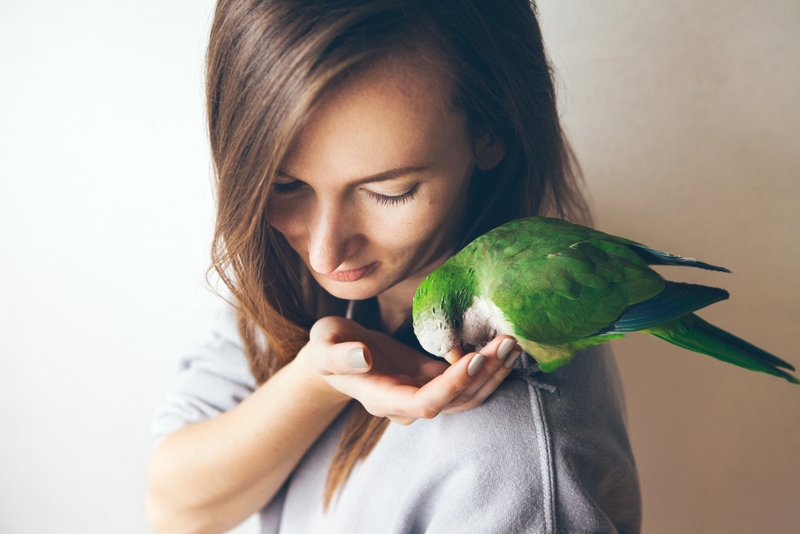
6. Don’t Give Up
Most parrots are certainly intelligent enough to learn potty training. However, the practical details are a little more complicated than housebreaking a dog or cat. For example, it’s sometimes more difficult to convince your parrot to get them to move to their safe zone, as opposed to a puppy that you can pick up and place in the appropriate area. It might take some a few weeks or even months to potty train a parrot, but the payoff is worth it in the end.
Above all, keep in mind that inherently, birds don’t control their sphincter very well and there will definitely be accidents in areas where you don’t intend them to occur. It is important to not punish your bird when they don’t “go” in the correct location, as doing so is counterproductive to animal welfare and your desired response from your pet.
Conclusion
Potty training a parrot is possible, but it takes patience. Recognizing your parrot’s behavioral cues is a crucial step so that you can relocate them to their potty zone when they need to go. Establishing a safe area to relieve themselves is also vital, since consistency is key for any type of training. Learning what makes your bird tick is also a huge bonus so that you know what incentives work best, whether it’s a particular type of reward or words of praise. Just keep trying, even if you feel like throwing in the towel. Your bird (and washing machine) will thank you later.
Featured Image Credit: Vyaseleva Elena, Shutterstock


